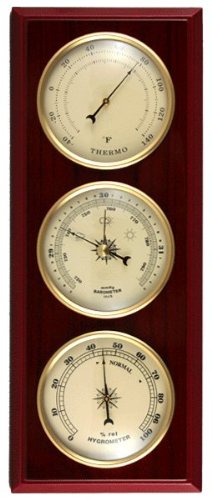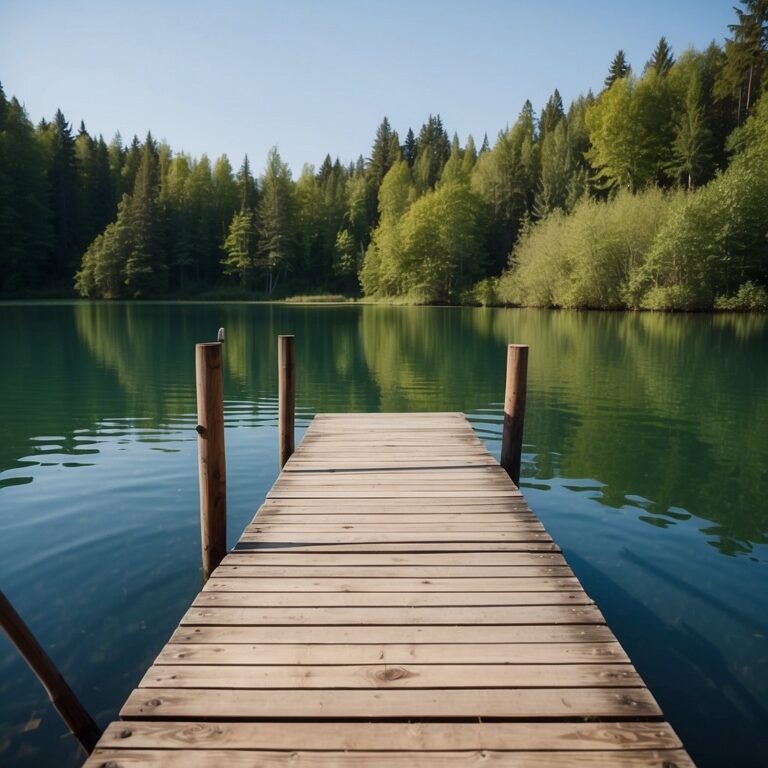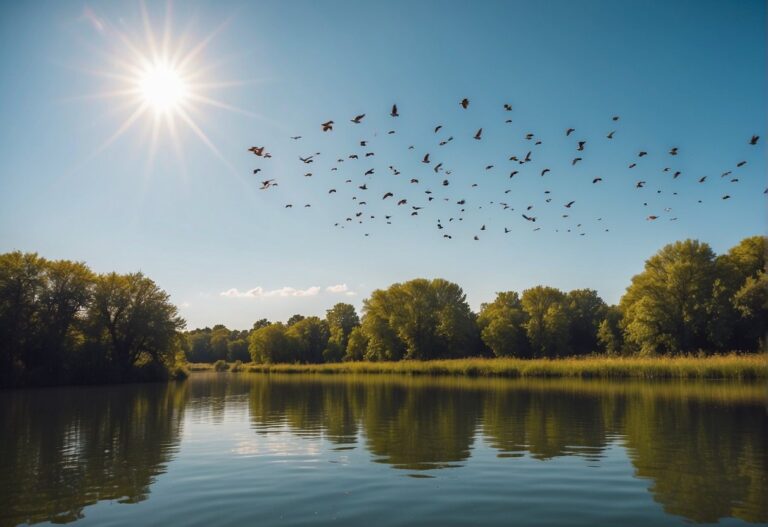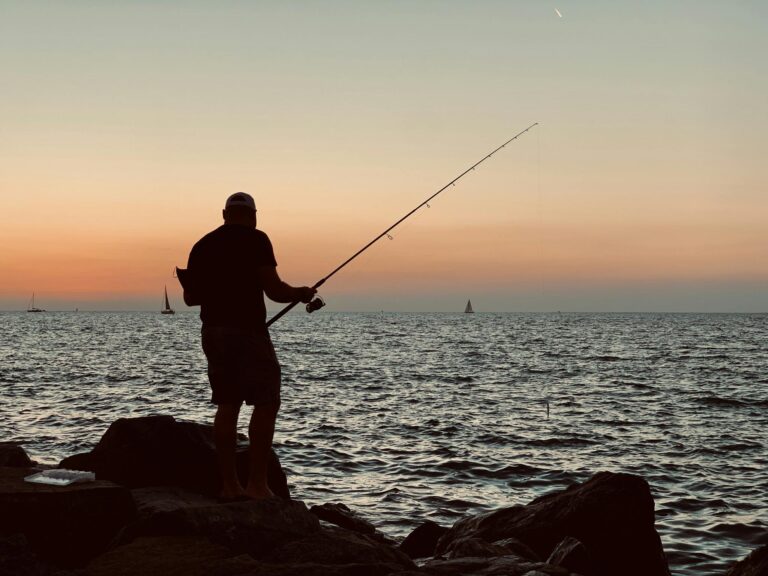Best Barometric Pressure for Fishing: Optimal Conditions for a Great Catch
Barometric pressure, an often overlooked aspect of the natural world, plays a crucial role in influencing fish behavior. Anglers know that the conditions under which they fish can be as important as the gear they use.
When it comes to fishing, barometric pressure can mean the difference between a successful catch and an uneventful day on the water. In essence, barometric pressure is the measure of the weight of the atmosphere above us, and it fluctuates with the arrival of different weather systems.
As fish are sensitive to changes in pressure, these variations can affect their feeding habits. Low pressure often precedes poor weather conditions and can result in increased fish activity, as they feed in anticipation of the coming change. Conversely, high pressure usually indicates fair weather, but can make fish less active and more difficult to catch.
This adds a fascinating layer to the strategy of fishing, as anglers must read not only the waters but the sky above.
In considering barometric pressure for fishing, the key details to focus on include reading pressure trends and understanding the typical behaviors of fish during rising and falling pressures.
It’s not just about the absolute value of the pressure – it’s the trend and the change that have the most significant impact on fish activity.
Top Barometric Pressure Gauges for Fishing
As passionate anglers, we understand that the barometer readings can be as crucial as the bait when angling for that trophy catch. Changes in barometric pressure have a significant influence on fish behavior, making a reliable barometric pressure gauge a fisherman’s secret weapon.
Whether you’re planning a trip to the local pond or setting sails for the deep blue, being armed with the right barometric tool can make all the difference.
Our carefully curated selection will guide you to the top pressure gauges that promise to keep you one step ahead of the fish – and the weather.
Camco Fishing Barometer

If you’re serious about fishing and want to make each trip count, Camco’s barometer is a handy tool that can tip the scales in your favor.
Pros
- Enhances fishing trips by indicating prime times to cast the line
- Easy-to-calibrate feature aligns with your local conditions
- Portable design with a convenient lanyard
Cons
- Some users report durability issues
- Requires manual readings, which might not appeal to tech-savvy anglers
- Accuracy may vary compared to high-end digital barometers
Ever had that feeling when you know the fish are biting, but you can’t seem to get the timing right? That’s where we found ourselves before bringing along the Camco TRAC Outdoors Fishing Barometer.
Easily calibrated to the local pressure, this little gadget told us when the fish were likely to be most active.
The color-coded dial is straightforward, much like traffic lights telling us when to go, slow down, or stop. It’s like having a fishing oracle in your pocket; who needs fish tales when you’ve got science on your side?
However, life’s not always smooth sailing. We noticed the barometer’s plastic felt a tad flimsy, leaving us wondering about its longevity after repeated exposure to the elements. Sure, it’s survived some outings, but will it weather the storm of a hardcore angling season? Time will tell.
In a digital world, this barometer kicks it old school. There’s no app, no alerts, just our interpretation of the needle’s dance. For the tech enthusiasts among us, this might feel like being handed a map when you’re used to a GPS.
Ambient Weather Traditional Station

We think the Ambient Weather YG315 Cherry Finish Dial Traditional Weather Station is a practical investment for those passionate about tracking weather patterns, especially for fishing aficionados who understand how barometric pressure influences fish behavior.
Pros
- Blends in nicely with most décor themes
- After initial calibration, it delivers accurate readings
- Enhances the boating experience, both functionally and aesthetically
Cons
- The cherry finish may appear more red than expected
- May require occasional fine-tuning for optimal accuracy
- The wood is engineered, which might not be to everyone’s taste
Having recently had the pleasure of using the Ambient Weather Traditional Weather Station on a fishing trip, I noticed the instruments were remarkably precise.
Its barometer is particularly responsive to pressure changes, essential for predicting the movement and feeding patterns of fish. After a simple calibration step, this barometer was as reliable as any serious angler could hope for.
The thermometer and hygrometer complement the barometer, each one encased in a lustrous cherry-finished solid wood base that looks as good in the home as it does on my boat.
It’s sleek, classic, and when friends see it, they often can’t help but compliment its traditional style and ask about the fishing forecast.
Getting ready for a trip to the lake, I could tell a storm was brewing because the barometer reading dropped significantly—a clear indicator it was time to reel in. It didn’t just forecast the weather accurately, but it also became a conversation piece, with its aesthetic design and evident functionality sparking interest in both weather patterns and fishing tales.
Lirches 8” 3-in-1 Weather Station

We think this barometer is a great tool for any fishing enthusiast who wants to track atmospheric conditions for a better catch.
Pros
- Multifunctional with accurate readings
- Strong build and easy-to-read dial
- Suitable for both indoor and outdoor use
Cons
- Initial calibration may be necessary
- Potential for the dial to stick
- Some may find it large for small spaces
After spending the day with the Lirches 3-in-1 barometer, I can say it’s been quite helpful in predicting local weather patterns, which is essential for a productive day of fishing.
The confluence of temperature, humidity, and pressure readings on one sizable dial made it simple to interpret the data.
Mounting it was a breeze. I picked a spot just outside my fishing cabin, under the eave where it wouldn’t get wet. The premium steel finish resisted the elements well, complementing the rustic aesthetic of my outdoor space.
I noticed that tapping the glass gently was necessary to free the barometer needle initially. This wasn’t a deal-breaker as it quickly started relaying accurate changes.
Checking it against my digital weather station, I was impressed by its consistency. However, one day, despite a clear sky, it obstinately pointed to “rainy”. A recalibration seemed to do the trick.
The unit is quite a conversation starter. Fellow anglers couldn’t help but admire its classic look. It might be on the larger side for some, especially if you’re tight on wall space, but when it comes to clarity and ease of reading, it definitely scores high.
BTMETER BT-100WM Anemometer

For avid anglers and outdoor enthusiasts, the BTMETER BT-100WM is a valuable asset, providing crucial weather data with commendable precision.
Pros
- Accurate readings of wind speed and barometric pressure, ideal for fishing conditions
- Comprehensive multifunctionality enhances outdoor activity planning
- Ease of use with auto shutdown feature to conserve battery life
Cons
- Does not come with batteries included
- Slightly bulky for pocket-carry
- Limited Bluetooth functionality; may have trouble interfacing with certain apps
Out on the lake, the breeze gently ruffling our hair, we’d whip out the BTMETER Anemometer, which has proven its worth time and again. Its accuracy is spot-on, alerting us to the optimal barometric pressure for a good catch.
Our recent trip had us marveling at how multifunctional this gadget is. Wind speed, temperature, humidity – you name it, the BTMETER measured it. All the crucial information literally at our fingertips, and the backlit screen is a godsend for those dusk or dawn expeditions.
We did have to stash a couple of spare AAA batteries in the tackle box, as they aren’t included. But the gadget’s auto shutdown feature meant we weren’t swapping them out all that often.
A bit of a snug fit, but the anemometer slipped into our vest pocket without too much fuss. The Bluetooth is a nifty idea, although we’ve heard a few grumbles about compatibility – something to consider if pairing with your device is a must.
Buying Guide
When selecting a barometric pressure instrument for fishing, we need to consider several crucial features that can significantly enhance our angling experience. Here are some key aspects to keep in mind:
Accuracy
- Precision: It’s essential that the device offers accurate pressure readings to ensure we can forecast fish behavior.
- Calibration: Make sure the tool can be easily calibrated for local conditions.
Portability
- Size: A compact and lightweight tool is preferable for ease of transport.
- Durability: Since fishing often involves exposure to the elements, pick a device that’s tough and water-resistant.
Readability
- Display: Opt for a model with a clear and readable display, even in bright sunlight.
- Units: Be sure it measures in units familiar to us or can be toggled between different measurement units.
Features
- Data Logging: Some units record data, which is useful for comparing current conditions to past fishing trips.
- Trends Indicator: Devices may display trends in barometric pressure, which can be critical for predicting fish activity.
Battery Life
- Type: Check if it uses standard batteries we can replace easily or if it has a rechargeable battery.
- Longevity: The longer the battery life, the better, especially for extended trips.
By ensuring these features align with our needs, we equip ourselves with a valuable tool for improving our fishing outings.
Monitoring barometric pressure is like reading nature’s signals, guiding us to when the fish are most likely to bite.
Frequently Asked Questions
To help you better understand the role of barometric pressure in fishing, we’ve compiled the most common queries anglers have.
These questions tackle how pressure impacts fish behavior and feeding patterns, assisting us in planning our fishing trips more effectively.
Does barometric pressure affect fishing conditions?
Barometric pressure can have a significant influence on fishing conditions. Fish are sensitive to pressure changes, which can alter their feeding habits. When pressure shifts, it often results in movement and changes in fish behavior, prompting us to adjust our strategies.
At what barometric pressure do fish tend to feed more actively?
Fish generally tend to feed more actively when the barometric pressure is stable or rising slightly. Here’s a short guide:
- High Pressure (30.50 inHg and above): Fair fishing, but may slow down
- Normal Pressure (29.70 – 30.40 inHg): Ideal for active feeding
- Low Pressure (Below 29.70 inHg): Increasingly active feeding before a weather change
How do changes in barometric pressure influence saltwater fishing?
In saltwater environments, changes in barometric pressure affect fish behavior as they do in freshwater.
Before a storm, when the barometric pressure drops, saltwater species may feed aggressively. Conversely, high and stable pressure can lead to clearer skies and slower saltwater fishing conditions.
What barometric pressure is ideal for targeting trout?
For targeting trout, a falling or low barometric pressure can stimulate feeding, as trout often capitalize on the disarray among aquatic insects and smaller fish during such times. Aim for a pressure reading just before it falls below 29.70 inHg.
Can the barometric pressure forecast improve fishing success?
Monitoring the barometric pressure forecast can greatly enhance our chances of fishing success.
Anticipating pressure changes allows us to plan when to fish for a more active bite:
- Watch for approaching weather fronts, as fish may feed more just before these changes.
- Stable pressure conditions often mean more predictable fish behavior.
- Sudden pressure drops are prime times to hit the water.
How does barometric pressure affect different species like bass, walleye, and catfish?
Each species reacts distinctly to barometric pressure changes, necessitating tailored approaches:
- Bass often feed actively just before a drop in pressure.
- Walleye may prefer a slow but steady rise in pressure for optimal activity levels.
- Catfish can be more active during lower pressure, especially when it is falling ahead of a storm.
Understanding these patterns helps us time our fishing excursions and choose the right bait and techniques.




